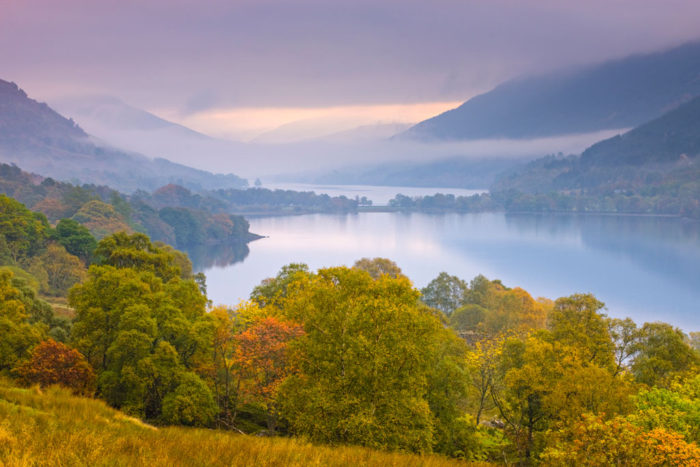Regional guide: Loch Lomond and the Trossachs
With serene waters and more than 40 peaks, Loch Lomond and The Trossachs National Park is a charming introduction to highland life, says Jenny Rowe
Ragged, exposed mountain peaks burst out of lush, sheltered glens and unfathomable lochs in Loch Lomond and The Trossachs National Park. This uniquely dynamic environment repeatedly lures hillwalkers with 21 munros (peaks higher than 3,000 feet) and 20 corbetts (those between 2,500 and 3,000 feet) offering quite the challenge.
Yet, with the reassuring prospect of civilisation – in the form of cosmopolitan Glasgow – within easy reach, many others go the distance to visit its landscapes for recuperation and inspiration, making it Scotland’s most popular countryside destination with more than four million annual visitors.
Split into Lowland and Highland areas by the Highland Boundary Fault that runs across Loch Lomond itself, the region’s tourist trade began to swell in the 19th century. That the National Park’s dramatic concertina-ed landscape juxtaposed so strongly with the rolling pastures of England impressed literary explorers. Samuel Taylor Coleridge, Dorothy Wordsworth and William Wordsworth made three trips up north, the latter writing poems such as To a Highland Girl and Stepping Westward, in response. Sir Walter Scott also did much to raise its profile when he published his 1810 poem The Lady on the Lake, inspired by Loch Katrine, and his 1817 novel Rob Roy, based on the Trossachs-dwelling folk hero. www.lochlomond-trossachs.org
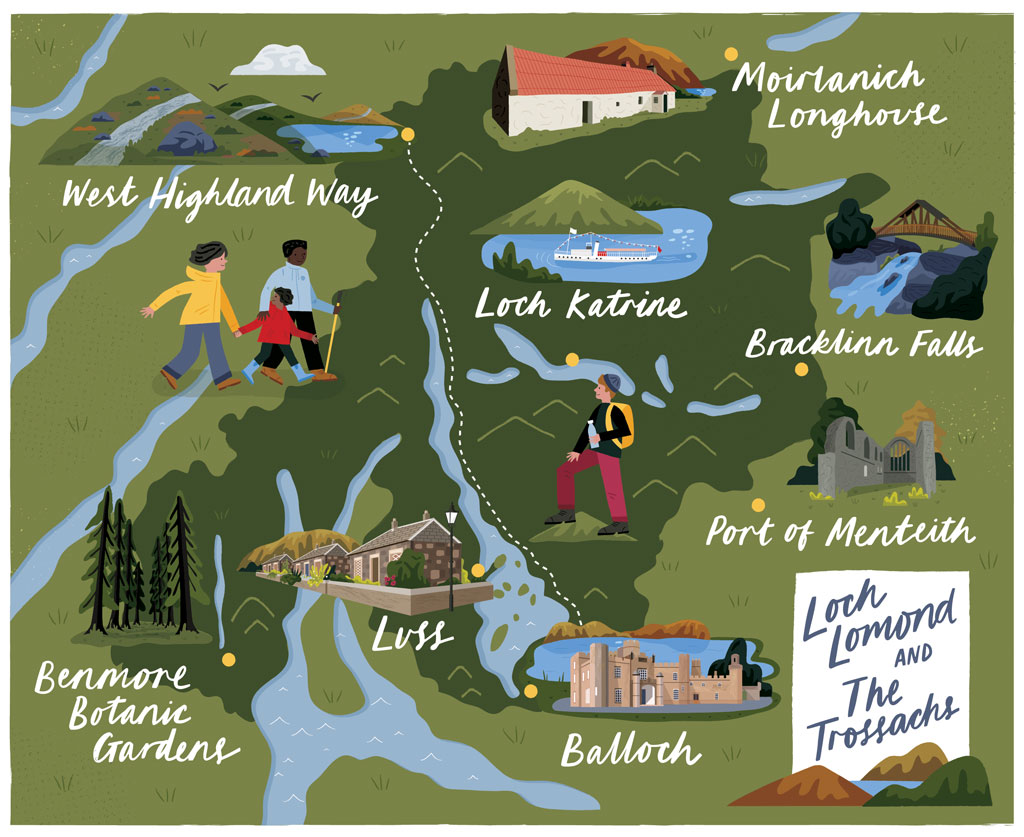
Balloch

The gateway to the Loch Lomond and The Trossachs National Park, Balloch is only 50 minutes from Glasgow via train, making it well worth a day trip. Once your feet touch dramatically greener ground, most head for Loch Lomond Shores, a built-up section of the lakeside crowded with eateries and opportunities for water-based activities.
The paddle steamer Maid of the Loch, a magnificent example of Clyde-built engineering with a bold, art deco-inspired interior, is moored in the vicinity. After 28 years on the water, the Maid was decommissioned in 1981 but a conservation project is underway to get the ship sailing again. Until that time, visitors can admire the looming silhouette of Ben Lomond from three different decks and learn about the ship’s history and engineering. On the opposite side of the River Leven, which feeds into the loch in the south, stands Balloch Castle. Built by John Buchanan, a partner in the Glasgow Ship Bank, it is now derelict, but its 200-acre country park harbours many languorous lake views. Two walking trails – Three Lochs Way and The John Muir Way – also stem from Balloch, so it really is a great place to start for Highlands novices.
The Hill House
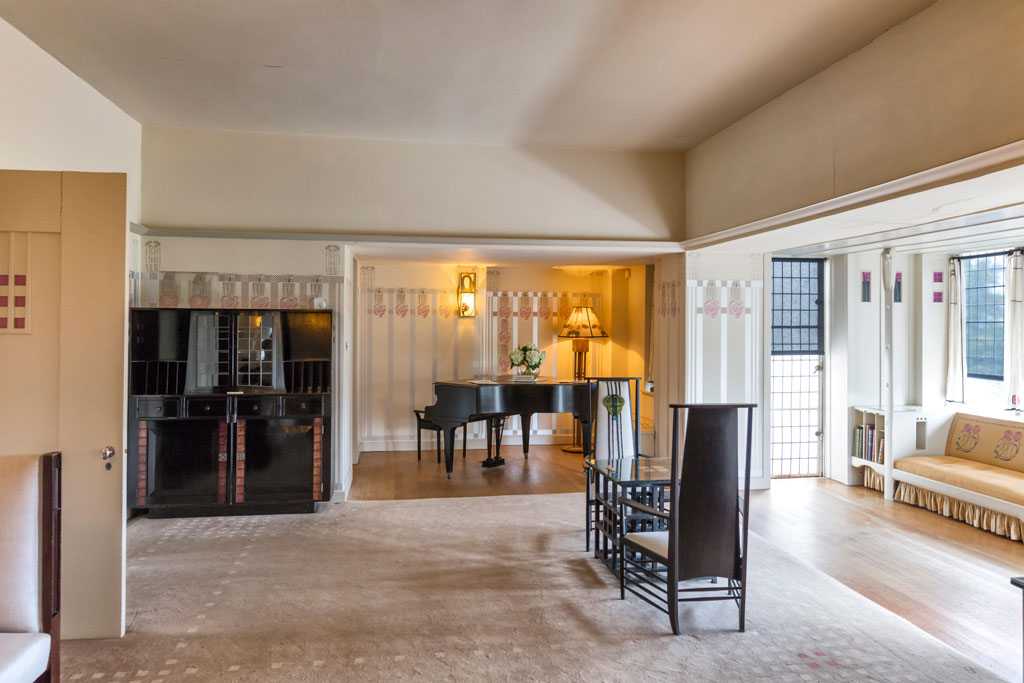
This Helensburgh house was one of the last complete sites designed by architect Charles Rennie Mackintosh and his artist wife Margaret, and remains their most magnificent domestic masterpiece. Mackintosh was Scotland’s answer to Frank Lloyd Wright and his avant-garde style accentuates the contrast of light and dark inside, its simplicity verging on starkness.
The Hill House was commissioned by the Blackie family, with whom Charles stayed in order to create a home that better served their needs. Its visual quirks and beauty are obvious, but its functional finesse may take longer to appreciate.
Brachlinn Falls

Rainfall is common in Scotland, so if you’re caught out when exploring the National Park, head to Bracklinn Falls, a series of waterfalls which attain peak performance during a heavy downpour.
The Bracklinn Falls Bridge, built in 2010, offers a safe vantage point from which to admire the cascade – though the erection of a new 20-tonne bridge over the deep gorge was a feat of engineering, the view was worth it.
The falls have even attracted the attention of Queen Victoria in the past, proof enough that they’re some of
the most captivating in the area.
Moirlanich Longhouse

The home of the Robertson family for more than a century, Moirlanich Longhouse is stuck in a time warp. Conserved as it was left in the 1960s, it’s a rare survival of a form of architecture once rife in Scotland, closely associated with an older, more communal method of agricultural land use.
With walls made from clay-mortared rubble and a wooden cruck-framed roof, what appears a rudimentary home from the outside clashes with the hotchpotch of exuberant colours and prints inside. Cleverly concealed box beds, a hanging chimney and many layers of surviving wallpaper tell the intriguing stories of Scotland’s rural history better than any book.
Luss

Neat rows of medieval cottages, topped with local slate quarried from the hillsides in the 18th and 19th centuries, welcome you to Luss, which was originally called “Clachan Dhu” – “the dark village – because of the hills that coddle it in a blanket of shadows.
The new name came about after St Kessog, an Irish missionary who brought Christianity to the village, was martyred in the 6th century. “Lus” is the Gaelic name for herbs, which his body was embalmed with and which subsequently grew over his grave. The graveyard dates back to the 7th century, while the church was built much later in 1875. Its Scots pine rafters and Victorian stained-glass windows deserve a look.
Benmore Botanic Garden
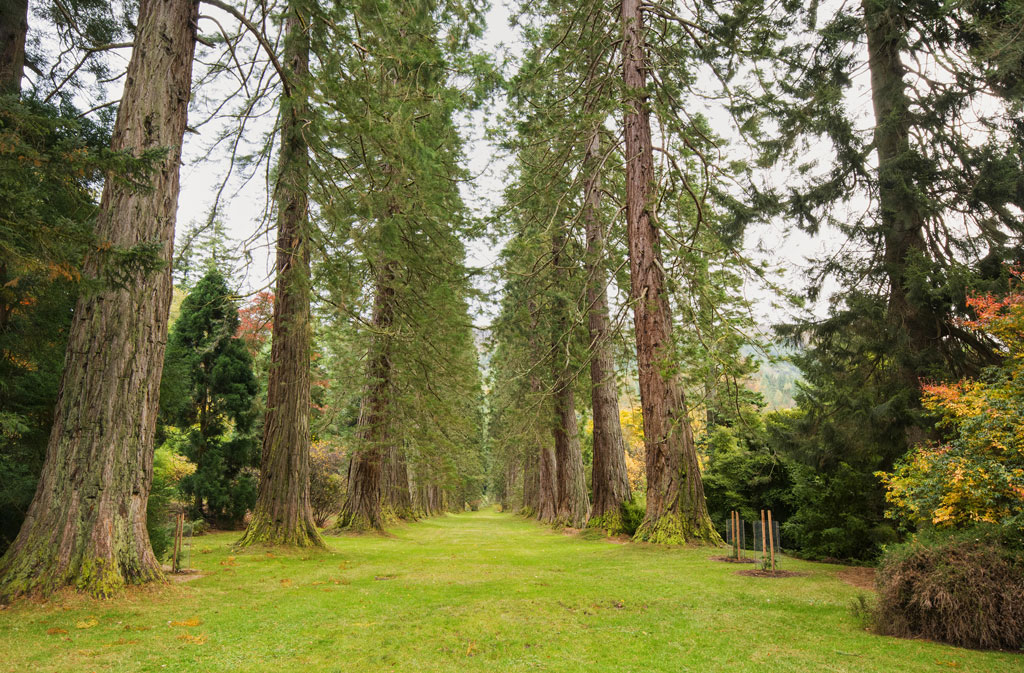
The westerly toe of the National Park, which swerves west from the mainland as dictated by Loch Long, is an incongruous location for a world-famous collection of plants. Yet Benmore Botanic Garden is a magnificent 120-acre plot that is dwarfed only by the vast mountainside landscape in which it nestles.
Your arrival through an avenue lined with 150-year-old Giant Redwood trees sets the tone for the botanical adventure to come, which will take you through dense fir and pine forests, a riot of rhododendrons and – for those that want a challenge – on towards a spectacular viewpoint over Holy Loch.
Alternatively, forsake the 450-foot ascent and appreciate instead the Victorian Fernery, which makes the sunlight and shadows dance to otherworldly effect.
Port of Menteith
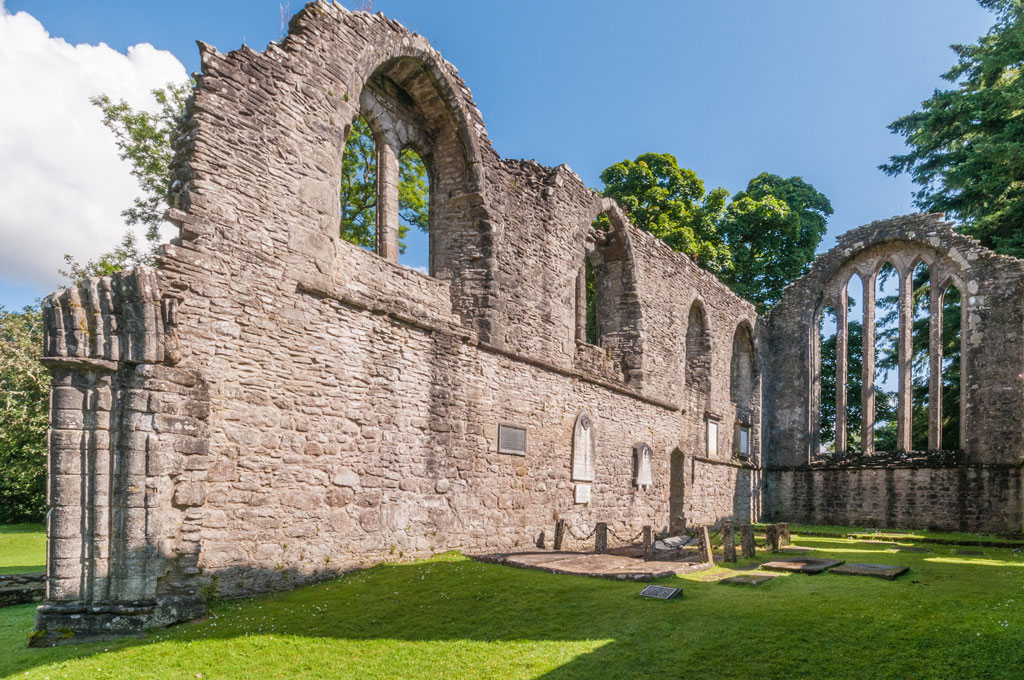
The chameleon-like settlement of Port of Menteith on the north-eastern edge of the Lake of Menteith (one of Scotland’s only named “lakes” – the rest are “lochs”) has been many things throughout history, but always special.
Its earliest claim to fame arose in 1238, when an Augustinian priory was built on the island of Inchmahone in the centre of the lake. It has received several royal visits since – including the four-year-old Mary, Queen of Scots in 1547 – and now its secluded ruins are worth the ferry trip from the pier.
In 1457 the village itself was born as a barony created by King James III, and is now a well-known fisherman’s retreat. Recently developed on the other side of the small lake is a cookery school.
Loch Katrine
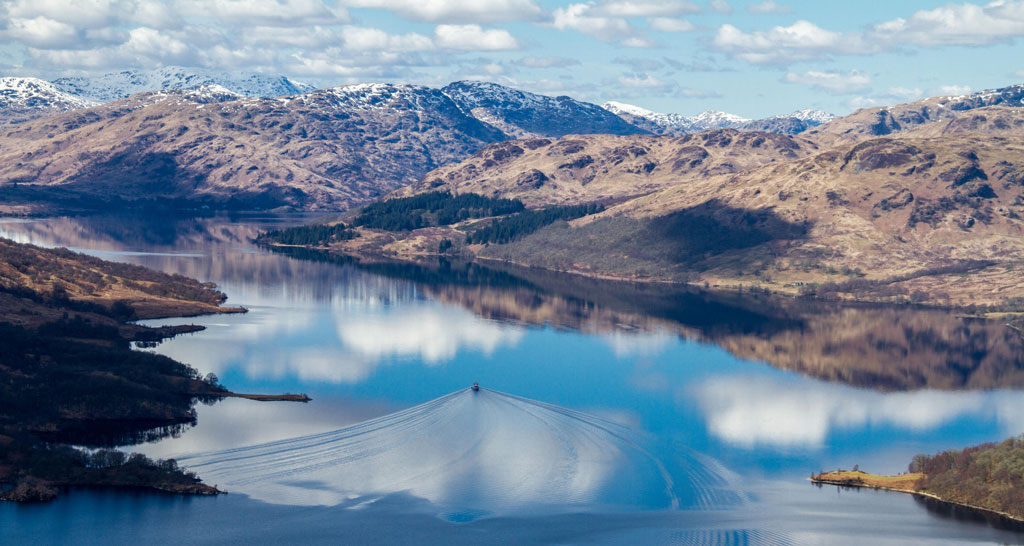
This eight-mile-long freshwater loch in the heart of the National Park has served as Glasgow’s main water supply for more than 150 years. Yet Loch Katrine is as fantastical as it is functional, the spring of inspiration for Sir Walter Scott’s epic 1810 poem The Lady of the Lake, which draws on the atmospheric surroundings of the Highlands and the “evergreen Pine” as sources of pride, describing its distinctive “keen and searching air”. It was here, too, that Queen Victoria enjoyed a boat trip in 1869.
Today, visitors can follow in her wake on one of two boats: the steamship Sir Walter Scott, which was launched in 1899, or a modern cruiser aptly-named The Lady of the Lake. If you sail west from Trossachs Pier to Stronachlachar, it is possible to cycle back along the shore through Glengyle, the birthplace of the Scottish outlaw, Rob Roy MacGregor. In fact, the name Katrine comes from the Gaelic word “cateran”, which means Highland robber.
The West Highland Way
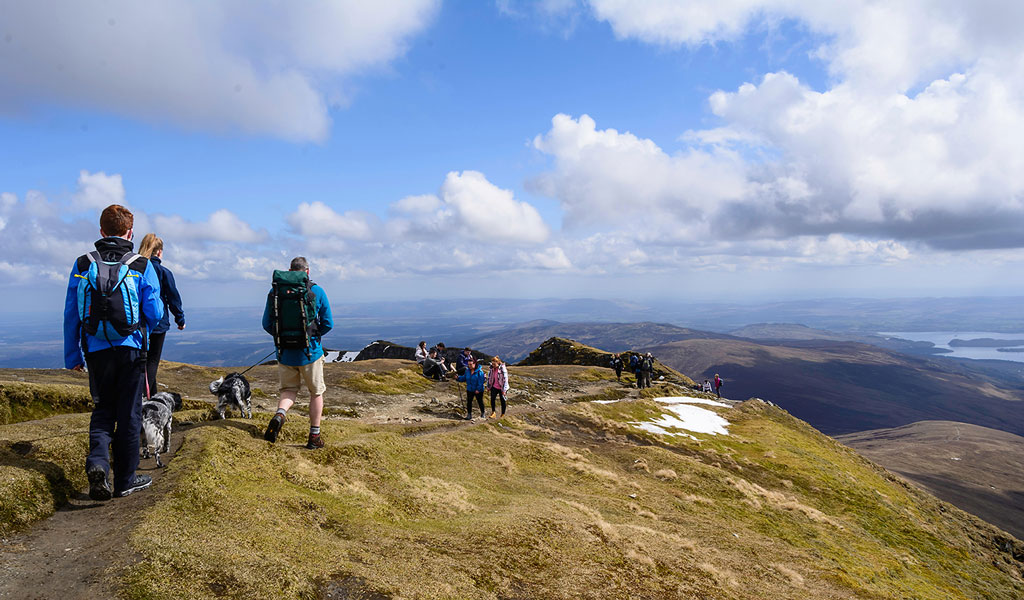
One of the world’s top trails stretches in its entirety from Milngavie to Fort William, taking in 96 miles of Scotland’s most dramatic landscapes. This includes 40 miles worth of Loch Lomond and The Trossachs National Park, where many of its highlights lie in wait. The path enters at Drymen and follows the shores of Loch Lomond, Britain’s largest inland stretch of water, into the lap of the National Park’s soaring munros, including the most southerly, Ben Lomond.
From there, the trail follows the River Falloch (don’t miss the stunning Falls of Falloch) to Crianlarich, from where you may glimpse the peak of Ben More, if released from its usual resident cloud. The River Fillan, which takes you nearby the ruins of St Fillan’s priory, leads you to Tyndrum. The northern sections are more demanding so less experienced walkers should explore the southern stretch.
READ MORE: Regional guide to the Yorkshire coast

